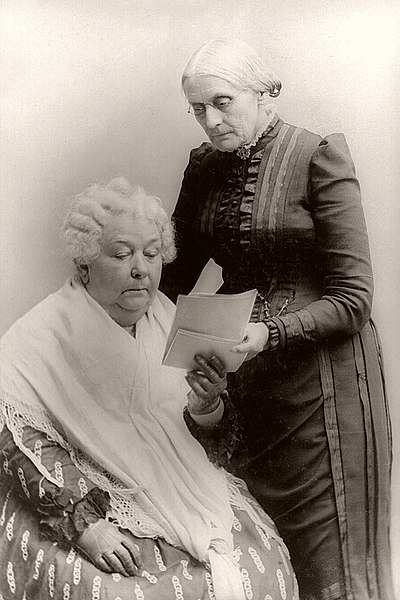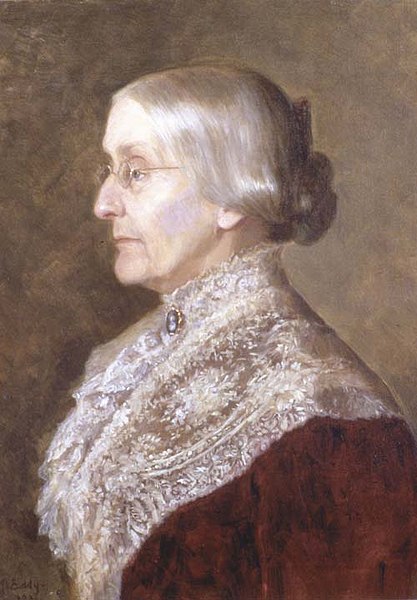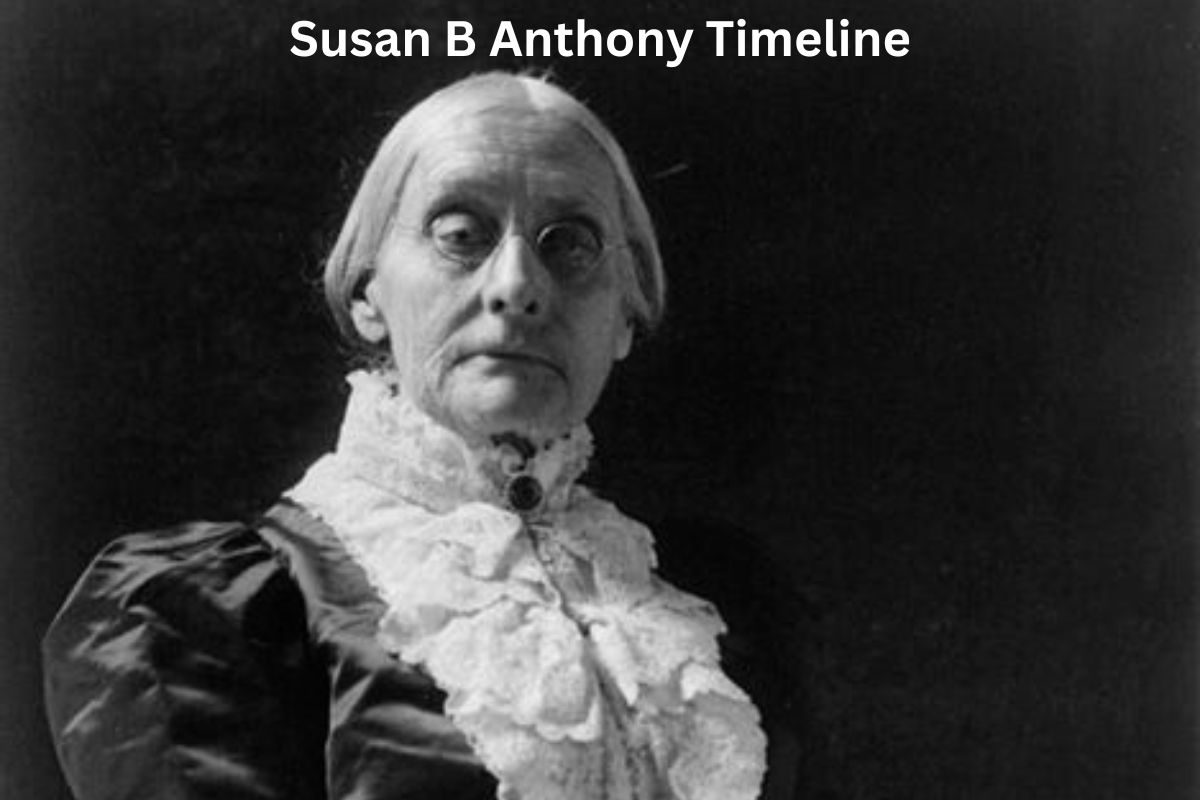Susan B. Anthony (1820-1906) was a prominent American suffragist and women’s rights activist. Born in Adams, Massachusetts, she dedicated her life to fighting for gender equality and social justice.
Anthony played a pivotal role in the women’s suffrage movement, advocating for women’s right to vote and equal rights under the law.
She co-founded the National Woman Suffrage Association and worked tirelessly to advance women’s suffrage through organizing conventions, delivering speeches, and lobbying for legislative change.
Anthony’s determination and unwavering commitment to the cause made her a prominent figure in the fight for women’s rights. Her legacy continues to inspire generations of activists striving for gender equality.
| Year | Event |
|---|---|
| 1820 | Susan B. Anthony is born in Adams, Massachusetts. |
| 1851 | Anthony meets Elizabeth Cady Stanton. |
| 1868 | Anthony becomes the publisher and editor of “The Revolution” newspaper. |
| 1872 | Anthony casts her vote in the presidential election and is arrested. |
| 1890 | The National Woman Suffrage Association merges into the National American Woman Suffrage Association. |
| 1906 | Anthony publishes the first volume of her autobiography, “The History of Woman Suffrage.” |
| 1908 | Anthony delivers her famous speech “Failure is Impossible.” |
| 1906 | Susan B. Anthony passes away in Rochester, New York. |
| 1920 | The 19th Amendment, known as the Susan B. Anthony Amendment, is ratified. |
Timeline of Susan B Anthony
1820 – Susan B. Anthony is born in Adams, Massachusetts
Susan Brownell Anthony was born on February 15, 1820, in Adams, Massachusetts. She was raised in a Quaker household, which instilled in her a strong sense of equality and social justice. Her family later moved to Hardscrabble, New York, where Anthony spent her formative years.

1851 – Anthony meets Elizabeth Cady Stanton, a pivotal moment in her activism career
A significant turning point in Anthony’s life occurred in 1851 when she met Elizabeth Cady Stanton at a women’s rights convention in Seneca Falls, New York. The meeting sparked a lifelong friendship and partnership in the fight for women’s rights.
Also Read: Facts About Susan B Anthony
Anthony and Stanton would become inseparable allies, working together to advance the cause of suffrage and women’s equality.
1868 – Anthony becomes the publisher and editor of “The Revolution” newspaper
In 1868, Susan B. Anthony became the publisher and editor of a women’s rights newspaper called “The Revolution.” The newspaper served as a platform for Anthony to voice her ideas, promote women’s suffrage, and advocate for social and political reforms.
Also Read: Accomplishments of Susan B Anthony
Through “The Revolution,” she aimed to raise awareness and rally support for the women’s rights movement, reaching a wider audience with her messages of equality and justice.
1872 – Anthony casts her vote in the presidential election and is arrested for it
In 1872, Susan B. Anthony made history by casting her vote in the presidential election, challenging the laws that denied women the right to vote.
She intentionally broke the law to draw attention to the inequality faced by women in the political sphere. Anthony was subsequently arrested and charged with illegally voting.
The trial gained significant media attention and further highlighted the issue of women’s suffrage, making Anthony a prominent figure in the movement.

1890 – The National Woman Suffrage Association merges into the National American Woman Suffrage Association
In 1890, the National Woman Suffrage Association (NWSA), co-founded by Susan B. Anthony and Elizabeth Cady Stanton, merged with another suffrage organization to form the National American Woman Suffrage Association (NAWSA).
The merger aimed to unite different suffrage groups and consolidate efforts towards achieving women’s suffrage.
Anthony played an instrumental role in the formation of NAWSA and served as its president from 1892 to 1900, working diligently to advance the cause of suffrage.
1906 – Anthony publishes the first volume of her autobiography, “The History of Woman Suffrage”
In 1906, Susan B. Anthony published the first volume of her autobiography, titled “The History of Woman Suffrage.”
Co-authored with Elizabeth Cady Stanton and Matilda Joslyn Gage, the book chronicled the history and struggles of the women’s suffrage movement, providing an important account of the movement’s progress.
Anthony’s autobiography served as a valuable resource and documented the efforts of suffragists, contributing to the preservation of the history of the women’s rights movement.
1908 – Anthony delivers her famous speech “Failure is Impossible”
In 1908, Susan B. Anthony delivered her iconic speech titled “Failure is Impossible” at the National American Woman Suffrage Association (NAWSA) convention. This powerful speech became one of her most memorable and inspiring addresses.
In her speech, Anthony passionately emphasized the importance of persistence and unwavering dedication in the fight for women’s suffrage. She urged her fellow suffragists to continue their efforts and expressed her belief that ultimate success was inevitable.
1906 – Susan B. Anthony passes away in Rochester, New York
On March 13, 1906, Susan B. Anthony passed away in Rochester, New York, at the age of 86. Her death marked the end of an era for the women’s suffrage movement.
Anthony’s tireless advocacy, determination, and lifelong commitment to women’s rights left an indelible mark on the fight for gender equality.
Her passing was met with both mourning and a renewed determination among suffragists to carry on her legacy.
1920 – The 19th Amendment, known as the Susan B. Anthony Amendment, is ratified
Susan B. Anthony’s lifelong dedication and advocacy for women’s suffrage bore fruit with the ratification of the 19th Amendment to the U.S. Constitution in 1920.
Commonly referred to as the Susan B. Anthony Amendment, this historic milestone granted women the right to vote. Although Anthony did not live to witness this momentous occasion, her relentless work and the work of countless suffragists paved the way for this achievement.
